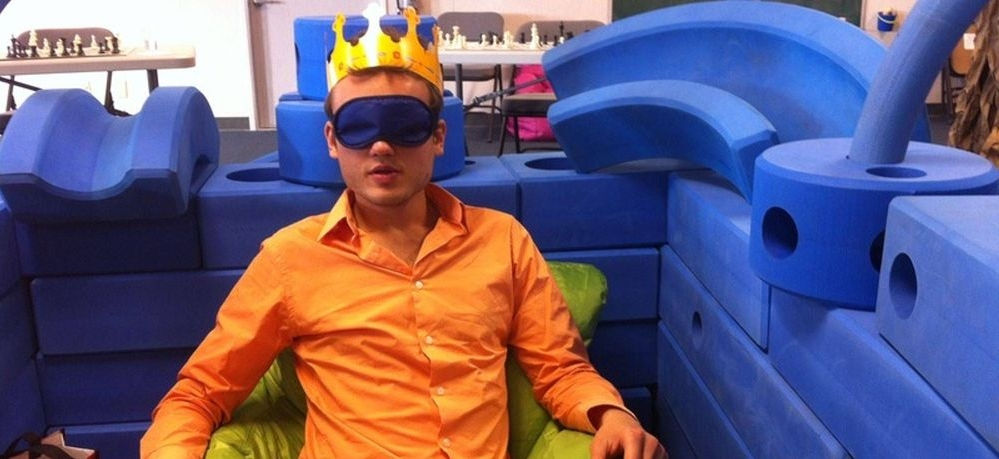

About Blindfold Chess
What is Blindfold Chess?
Blindfold chess (also known as sans voir) is a form of chess play wherein the players do not see the positions of the pieces or touch them. This forces players to maintain a mental model of the positions of the pieces. Moves are communicated auditorily via a recognized chess notation.
Psychology of Blindfold Chess
Given that it seems to require extraordinary visuo-spatial abilities and memory, this form of chess has led to considerable research in psychology, starting with the research of Alfred Binet in 1893, continuing with the work of chess grandmaster and psycho-analyst Reuben Fine in 1965, and culminating in the last two decades with several scientific articles describing experiments on the psychology of blindfold chess.[12] In general, this research shows that what is crucial for blindfold chess are both the knowledge that chess players have acquired and their ability to carry out visuo-spatial operations in the mind’s eye.
Notable Findings
According to Hearst and Knott in their book BLINDFOLD CHESS History, Psychology, Techniques, Champions, World Records and Important Games, some interesting findings were concluded:
- The general memory of chess masters, including those able to play many blindfold games simultaneously, is no better than that of the average person.
- Highly skilled players can form long-term memories of full-board chess positions within sconds of viewing them.
- High level chess skill (not just blindfold chess) requires a recognition-action repertoire of some 50,000 to 100,000 features of chess positions and associated responses.
- Some of the strongest masters find the actual sight of a chess position to be more distracting than helpful when thinking ahead during a game.
- Practicing blindfold chess improves sighted chess skill.
- Some of the the strongest blindfold chess masters claim that the strength of their blindfold play is similar to that of their sighted lay.
- Blindfold chess masters consistently report that what they visualize are not images of pieces or chessboards, but abstractions of these with minimal or no physical features. A typical report is, "I do not visualize real pieces but I know where they are."
